
How to Naturally Reduce a Neck Hump: Effective Exercises, Remedies, and Tips
If you’ve noticed a little bump forming at the base of your neck, you’re not alone. A neck hump, also known as Dowager’s Hump, is more common than you might think, and while it can be frustrating, the good news is that there are natural ways to help reduce it. Whether it’s caused by poor posture, sitting too long, or age-related changes, a neck hump can lead to discomfort, stiffness, and even some pain if ignored.
But don’t worry; with simple adjustments to your daily habits, posture exercises, and homeopathic remedies, you can get back on track and start feeling better. In this blog, we’ll dive into what causes a neck hump, what symptoms to look out for, and how to improve your posture and reduce discomfort naturally.
BM198 is recommended for pain and stiffness that occurs at the start of the movement and disappears as the movement is discontinued; pain aggravated by cold, damp weather and stormy weather; and feeling of joint weakness.
What is a Neck Hump?
A neck hump, often referred to as Dowager’s Hump or kyphosis, is a visible, rounded curve that forms at the base of your neck. It’s when the upper part of your spine starts to bend forward, creating a bit of a bump or hump. Many people notice it when looking at their side profile in a mirror, as it causes the neck and head to push forward unnaturally. It's not just a cosmetic issue; this misalignment can lead to discomfort and even pain if left unchecked.
Though it can affect people of all ages, it’s more commonly associated with older adults, especially women, which is where the term “Dowager’s Hump” comes from. But more recently, younger generations are seeing this issue pop up because of lifestyle habits—like sitting at desks for long periods or constantly looking down at phones. Simply put, the neck hump can happen to anyone who isn’t paying attention to their posture or spinal health.
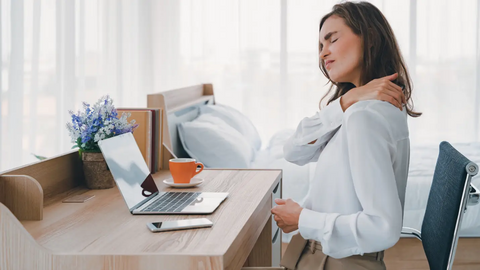
How Does a Neck Hump Develop?
The neck hump doesn’t appear overnight. It gradually develops over time due to how we hold our bodies, the activities we do (or don't do), and sometimes due to underlying medical conditions. One of the biggest culprits is poor posture, especially the habit of hunching over. Whether working at a desk, bending over a smartphone, or even slouching while watching TV, this forward-leaning posture strains the neck and upper back muscles, weakening them. Over time, this muscle weakness allows the spine to curve and form that characteristic hump.
A sedentary lifestyle also plays a substantial role in the development of a neck hump. When you're sitting for hours on end, especially with poor posture, the muscles that support your spine become underused and start to weaken. This makes it harder for your body to hold proper alignment, contributing to that rounded upper back and forward-leaning neck.
BM140 provides effective natural support for spine health. Useful for shoulder, scapula, waist, or hip pain and inability to move.
Age-related changes can also contribute. As we get older, conditions like osteoporosis or natural wear and tear on the spine can make the bones more fragile, increasing the likelihood of developing a hump. Spinal compression, fractures, or degeneration can all play a part.
It's important to note that injuries, particularly those involving the spine or certain medical conditions, can also lead to the development of a neck hump. While some cases are due to lifestyle habits, others may be connected to deeper health issues. However, no matter the cause, the good news is that there are ways to naturally address and even reverse the progression of a neck hump with proper care and attention.
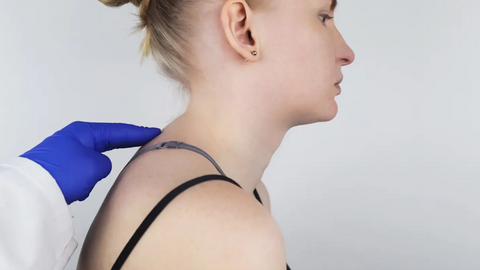
Symptoms of a Neck Hump
The symptoms of a neck hump often start off subtle, so much so that many people don't even realize it's developing until it's quite noticeable. The most obvious sign is the rounded bump or hump at the base of the neck. When you look at your profile in the mirror, you might see that your neck is leaning forward, and there's a small hump starting to form where the spine curves. It might not be a sharp or sudden curve but a gradual rounding that becomes more visible over time.
You might also notice some discomfort in your neck and upper back along with the visible change. This area can feel stiff or tight, especially after sitting for long periods or when you wake up in the morning. If you've been sitting hunched over for a while, that stiffness can sometimes become sore, making it hard to move your neck or shoulders freely.
Another common symptom is tension headaches. These headaches can creep up when your neck muscles are strained from supporting your head in that forward position all day. The tension starts in the neck and shoulders and moves up, causing dull, aching, annoying headaches.
As the hump progresses, you might also feel a reduction in your range of motion. Turning your head or stretching your neck might feel more difficult, and there's often a sense of being less flexible in the upper body. Over time, this can impact your movements and even your balance.
Fatigue is another symptom, though it’s less obvious. Constantly carrying your head in an unnatural position can be tiring for your body. You might feel more drained after simple tasks, especially those that involve sitting or standing for long periods. All of these symptoms can be frustrating, but they’re also signs that your body is asking for a change.

Potential Risks of Ignoring a Neck Hump
If a neck hump is left untreated, the risks go beyond just cosmetic concerns. Over time, the discomfort you’re feeling can turn into chronic pain. What starts as stiffness or soreness can become a constant, nagging pain that doesn’t go away with simple stretches or rest. The muscles around your neck and upper back will keep getting weaker, and the curve in your spine will deepen, making it harder for your body to hold a healthy, upright posture.
Mobility can also be seriously affected. As the neck hump progresses, your ability to move freely will decrease. Turning your head, reaching above your head, or standing straight might be more difficult. You might find yourself adjusting how you move to avoid the discomfort, which can worsen things in the long run.
There’s also a risk of more serious spinal problems. When your spine is misaligned, it puts extra pressure on your vertebrae and the discs between them. Over time, this can lead to conditions like herniated discs, where the cushioning between your vertebrae starts to slip out of place. Compressed nerves are another potential issue, which can cause sharp, shooting pains or even numbness and tingling in your arms and hands.
On top of the physical risks, there's the emotional side to consider. Living with a visible neck hump can affect your confidence and self-esteem. Many people feel self-conscious about their posture and how they look, which can lead to embarrassment or frustration. It's easy to shrug it off at first, but as the hump becomes more pronounced, it can impact the way you see yourself.
Lastly, ignoring a neck hump can make it much harder to correct later on. The longer you wait, the more ingrained the habit of poor posture becomes and the more difficult it is to reverse. Muscles weaken, bones shift, and the hump becomes more permanent. By addressing the issue early, you can avoid these risks and improve your posture.
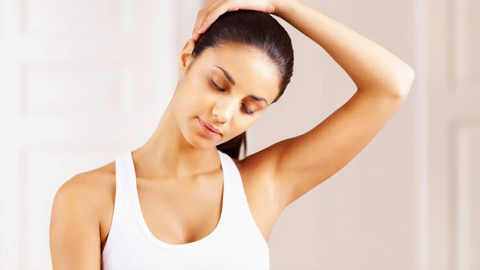
Natural Methods to Help Reduce a Neck Hump
If you’ve noticed a neck hump developing, there are natural ways to potentially reduce it or even prevent it from getting worse. The key is to be consistent with a few changes to your daily routine. Let’s talk about some effective methods you can try at home.
First and foremost, posture correction is crucial. Poor posture is often the main reason why a neck hump forms in the first place, especially if you spend a lot of time sitting at a desk or looking down at your phone. When you're sitting or standing, imagine there's a string pulling your head up from the top, encouraging your spine to straighten out. Your shoulders should be relaxed and pulled slightly back, and your chin should be tucked in instead of jutting forward. It may feel strange at first, especially if you're used to slouching, but correcting your posture will start to feel more natural over time. This simple adjustment can help prevent further curvature in the spine and reduce the strain on your neck muscles.
Next, consider adding strengthening and stretching exercises to your daily routine. Exercises like chin tucks, where you pull your chin towards your neck to create a double chin, can help strengthen the neck and upper back muscles. Wall angels are another great move. Stand with your back against the wall, pressing your entire spine into it, and slowly move your arms up and down like you're making a snow angel. This targets the muscles between your shoulder blades, which are often weak in people with neck humps. Regular stretching is also important, especially for the chest and shoulders, which can get tight and pull your posture forward. Simple stretches, like clasping your hands behind your back and pulling your shoulder blades together, can help open up your chest and counteract that forward hunch.
In addition to exercise, creating a more ergonomic environment is helpful. Whether you're working at a desk, reading, or using your phone, pay attention to how you position your body. Your computer screen should be at eye level, so you're not looking down for hours on end. Use a supportive chair that encourages good posture, and take breaks every hour to stand up, stretch, and reset your posture. If you're using your phone, hold it at eye level instead of bending your neck to look down at it. These small changes can make a big difference over time.
Lastly, making lifestyle adjustments can go a long way in helping to reduce a neck hump. If you spend a lot of time sitting, try to move around more frequently throughout the day. Sitting for long periods can contribute to the weakening of the muscles that support your spine. Even something as simple as standing up every hour, walking around, or doing a few stretches can help keep your muscles engaged and reduce the likelihood of developing a neck hump. Reducing stress is also important, as stress can cause you to tense up, leading to tight muscles in your neck and back.

Homeopathic Remedies for Managing Neck Hump Symptoms
When it comes to managing the discomfort and stiffness that can come with a neck hump, homeopathic remedies offer a natural and gentle approach. One of the great things about homeopathy is that it’s all about supporting your body’s natural healing process. Instead of just masking the symptoms, homeopathy aims to address the root cause, helping your body find balance.
Let’s talk about BM196, a homeopathic remedy that can be a helpful tool in dealing with the pain and discomfort associated with a neck hump. Designed for cervical spondylosis, BM196 helps with neck pain, stiffness, and discomfort, making it especially useful if poor posture or muscle strain has led to a neck hump.
BM196 addresses neck pain and supports recovery from shoulder and arm pain, tingling, and numbness in the hands or feet, which are common when nerves are affected by neck issues. Maybe you've noticed a popping sound when moving your neck or experienced muscle spasms. In that case, this remedy can help ease those issues, promoting smoother movement. It also helps with headaches caused by neck strain, making it a well-rounded option for managing related problems.
BM196 may help with cervical spondylosis problems, including a stiff, painful neck; shoulder, arm, or chest pain; tingling and pinprick sensations in your arms, hands, legs, or feet; numbness and weakness in your arms, hands, legs, or feet; popping sound when moving the neck, muscle spasms or headache.
In addition to BM196, other homeopathic remedies might be beneficial depending on your specific symptoms. For example, Rhus Toxicodendron is often used for muscle stiffness that feels worse after rest but improves with movement, which is a common complaint for people dealing with a neck hump. If you experience sharp shooting pains, Bryonia might be another remedy to consider, as it’s commonly used for joint pain that gets worse with movement.
Rhus Tox is recommended for joint pain, swelling, and stiffness aggravated by cold and damp weather. Support for motion.
It's important to remember that while homeopathy can be very effective for some people, it works best when combined with lifestyle changes, like improving posture and regular exercise. The beauty of homeopathy is that it's gentle, so you can use it alongside other natural methods without worrying about side effects or interactions.
Addressing the pain and stiffness with homeopathic remedies like BM196 allows you to focus on strengthening and stretching the muscles, which will help correct the posture issues causing the hump in the first place. It's all about creating a well-rounded approach supporting your body's natural healing while making the right changes to prevent the problem from worsening.
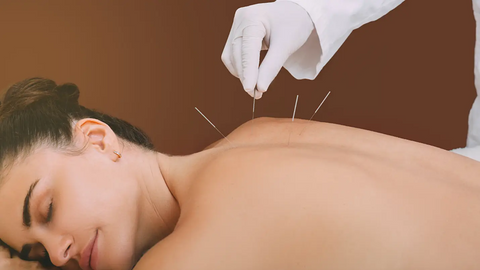
Complementary Therapies
When dealing with a neck hump, sometimes it helps to combine natural methods with other complementary therapies. While posture correction, exercises, and homeopathic remedies can make a big difference, adding in treatments such as chiropractic care, massage, or even acupuncture can give you an extra boost in relieving discomfort and improving your posture.
Chiropractic care is one of the most common options people turn to for neck and spine issues. A chiropractor can help realign your spine, which may be out of place due to the poor posture that contributes to a neck hump. Regular adjustments can help your body stay in a healthier position, reducing the strain on your neck and upper back. Plus, many people find that chiropractic treatments immediately relieve pain and stiffness.
Massage therapy is another great option to consider. If your neck and shoulder muscles are tight or knotted, it's harder for you to correct your posture or move freely. A professional massage therapist can work on those tense muscles, easing the tightness that often builds up from hours of sitting or standing with poor posture. Not only can this help improve flexibility, but it can also make it easier to hold your neck and back in a healthier position throughout the day. Some people even notice a reduction in the size of their neck hump over time as their posture improves and the muscles around their spine strengthen.
Acupuncture is a more alternative approach, but many people swear by it for relieving pain and tension. This therapy involves inserting tiny needles into specific points on your body to promote healing and balance your body’s energy. For neck hump issues, acupuncture can help release muscle tension, improve circulation, and reduce pain. It may sound a bit unconventional, but it’s been used for centuries as a natural way to manage various conditions, including chronic pain and postural issues.

The Bottom Line
Dealing with a neck hump can feel overwhelming at first, but it doesn’t have to be a permanent issue. By making small changes like correcting your posture, doing strengthening exercises, and trying natural remedies like BM196, you can start to reduce the hump and improve how your neck and back feel.
It’s all about being consistent and patient. Alongside complementary therapies like massage or chiropractic care, you can address both the appearance and discomfort of a neck hump in a gentle and natural way. So, take those first steps today—your body will thank you for it!


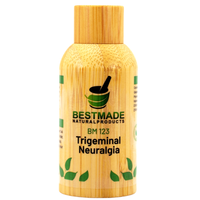

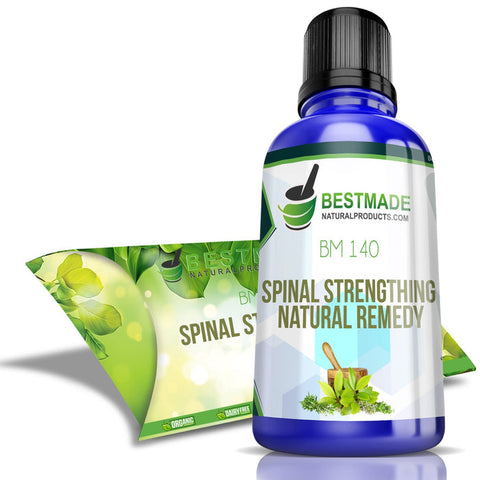
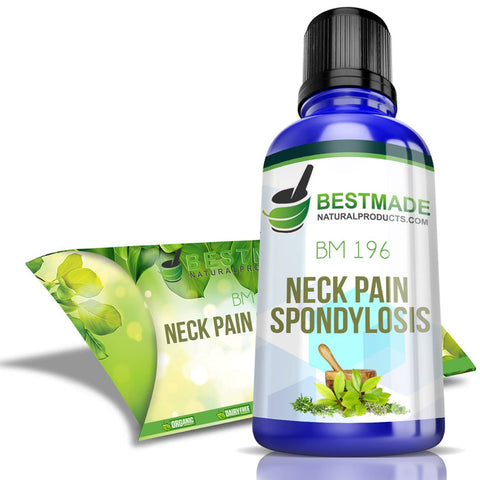

Dejar un comentario